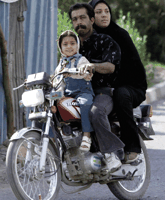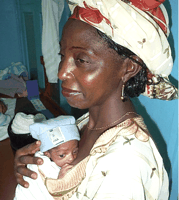This week in the BMJ
Volume 329,
Number 7475,
Issue of 13 Nov 2004
![[Down]](/icons/down.gif) Thalassaemia screening in Iran works
Thalassaemia screening in Iran works
![[Down]](/icons/down.gif) New IT system supports HIV/AIDS treatment in Haiti
New IT system supports HIV/AIDS treatment in Haiti
![[Down]](/icons/down.gif) Community initiatives reduce maternal mortality
Community initiatives reduce maternal mortality
![[Down]](/icons/down.gif) Policies on essential drugs help contain costs
Policies on essential drugs help contain costs
![[Down]](/icons/down.gif) Kangaroo care has wide potential
Kangaroo care has wide potential
![[Down]](/icons/down.gif) Innovation can overcome limited resources
Innovation can overcome limited resources
![[Down]](/icons/down.gif) Learning from "positive deviance"
Learning from "positive deviance"
Thalassaemia screening in Iran works
A primary care led genetic screening programme for thalassaemia in Iran has proved feasible, acceptable, and effective. Samavat and Modell (p 1134) describe the development of Iran's national programme, which has resulted in a 70% reduction in expected births of affected infants. It provides a model for other countries, including developed countries, seeking to implement comprehensive, equitable, genetic screening programmes for haemoglobin disorders (p 1115).

| |
Credit: ATTA KENARE/AFP/GETTY
|
|
![[To top]](/icons/back.gif)
New IT system supports HIV/AIDS treatment in Haiti
Lack of good information systems are a barrier to rolling out HIV/AIDS treatment in developing countries. In Haiti, the poorest country in the western hemisphere, 6% of adults are infected with HIV, and two non-governmental organisations have set up a web based electronic medical record system. Fraser and colleagues (p 1142) elaborate on how it is being used to track clinical outcomes, laboratory test results, and drug supplies.
![[To top]](/icons/back.gif)
Community initiatives reduce maternal mortality
Strategies based on interventions which involve supporting and empowering women in poor communities are neglected and undervalued in the drive to reduce maternal and neonatal mortality, argue Costello and colleagues (p 1166). Current policies that emphasise skilled and institution based care don't reach the poorest households. In communities where maternal mortality is above 150/100 000 and neonatal mortality above 35/1000, large scale community effectiveness trials are both feasible and necessary.

| |
Credit: MARK EDWARDS/STILL PICTURES
|
|
![[To top]](/icons/back.gif)
Policies on essential drugs help contain costs
Rich countries seeking to contain escalating drug expenditures should learn from the experience of the many developing countries that have adopted WHO's essential medicines policies, says Hogerzeil (p 1169). Although rich countries have adopted components of the policies WHO advocates, including evidence based clinical guidelines, they should also consider establishing lists of essential medicines based on sound scientific review and public health imperatives.
![[To top]](/icons/back.gif)
Kangaroo care has wide potential
First developed in Colombia, Kangaroo Mother Care was developed as a low cost technique of caring for low birthweight infants where access to incubators in neonatal care units was scarce. Ruiz-Peláez and colleagues (p 1179) describe what kangaroo care entails and argue it is as safe and effective as care provided in high tech neonatal units. It improves breastfeeding rates and increases parental satisfaction, and thus warrants much wider adoption in both resource poor and rich countries.
![[To top]](/icons/back.gif)
Innovation can overcome limited resources
Research and technological development should cater to local interests and needs in resource poor settings. Coloma and Harris (p 1160) say that rich countries should learn from the example of colleagues in developing countries, whose ingenuity, passion, and creativity are coupled with a mindset geared towards making the best use of whatever resources are available.

| |
Credit: IAN BERRY/MAGNUM PHOTOS
|
|
![[To top]](/icons/back.gif)
Learning from "positive deviance"
Even in the most adverse of circumstances, a few individuals adopt beneficial practices and have better health outcomes than their neighbours, who share similar risks. Marsh and colleagues (p 1177) say that identifying these unusual strategies and promoting them within the community is the core of an approach that has been successful in improving child health and may be of value in many other areas.
![[To top]](/icons/back.gif)
Thalassaemia screening in Iran works
New IT system supports HIV/AIDS treatment in Haiti
Community initiatives reduce maternal mortality
Policies on essential drugs help contain costs
Kangaroo care has wide potential
Innovation can overcome limited resources
Learning from "positive deviance"



